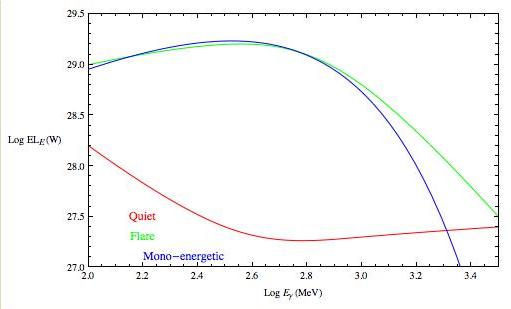Fermi Gamma-ray Space Telescope
Fermi Gamma-ray Space Telescope was launched in June 2008 and has performed flawlessly ever since. The Large Area Telescope is mostly sensitive to gamma rays in the 100 MeV to 100 GeV range and surveys the whole sky every three hours. (In addition it carries a Gamma-ray Burst Monitor.) It can also measure the spectrum of electrons and positrons between 10 GeV and 1 TeV. Fermi observes terrestrial thunderstorms, the moon, solar flares, novae, the diffuse interstellar medium, supernova remnants, pulsars and their nebulae, blazars, quasars, gamma ray bursts and star forming galaxies. It has made major discoveries in each of these areas. In addition it has sought evidence for the annihilation and decay of dark matter particles and the limits it has set are refining the hunt for supersymmetry below, on and above ground. My main attention has recently been focused on explanations of the dramatic gamma ray flares seen in the Crab Nebula, modeling the observed, variable emission throughout the electromagnetic spectrum from relativistic jets using relativistic, hydromagnetic simulations and learning about the origin of cosmic rays. I am also involved in two missions which should follow up many discoveries made with Fermi - the Nuclear Spectroscopic Telescope ARray, which has just been launched, and the Japan-led ASTRO-H, which is scheduled for launch in 2014.
 Gamma ray spectrum of the Crab Nebula during the height of a flare in April 2011 with best fit, mono-energetic synchrotron spectrum (Blandford & Yuan 2012, in preparation.).
Gamma ray spectrum of the Crab Nebula during the height of a flare in April 2011 with best fit, mono-energetic synchrotron spectrum (Blandford & Yuan 2012, in preparation.).
Some Recent Papers
- Gamma-Ray Activity in the Crab Nebula: The Exceptional Flare of 2011 April
- Measurement of the Cosmic Ray e++e- Spectrum from 20GeV to 1TeV with the Fermi Large Area Telescope
- The Structure and Emission Model of the Relativistic Jet in the Quasar 3C 279 Inferred from Radio to High-energy ?-Ray Observations in 2008-2010